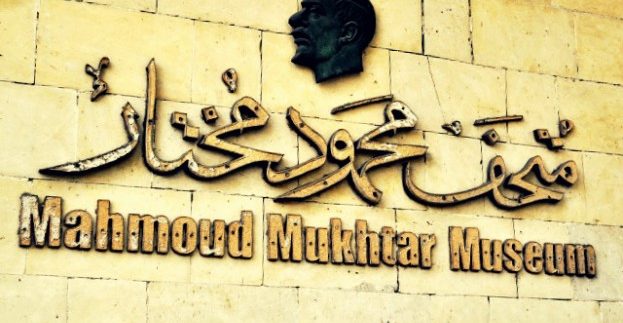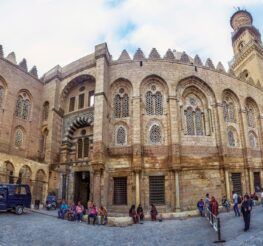Mahmoud Mukhtar Museum: Fitting Tribute to One of Egypt’s Most Influential Artists

Katie Dryden
Although Cairo-born sculptor, Mahmoud Mukhtar, passed away some eighty years ago, both his memory and his work continue to live on and prosper in the Mahmoud Mukhtar Museum located in Zamalek close to Cairo Opera House.
Before entering the home of Mukhtar’s exquisite collection, there’s a beautiful outdoor park area surrounding the museum full of trees, plants and a wide brick footpath leading to the entrance – it’s quite small, but delightful all the same. The park itself also houses some of the sculptor’s larger bronze statues which have been carefully placed amongst the greenery creating a serene environment to explore.
The actual museum was built under the direction of late Egyptian architect, Ramses Wissa Wassef, though the idea to commemorate the memory and work of the famous sculptor originated from pioneering feminist, Hoda Sharowy, who was a friend to Mukhtar as well as somebody with a keen interest in the arts.
Inside the Mahmoud Mukhtar Museum are a collection of small, medium and life-size sculptures made from bronze, marble, stone, granite and gypsum relief, which he used to create large wall sculptures that give the affect of having being carved into the stone slab, not too dissimilar to methods use in Pharaonic times. These particular pieces are around 2 x 4 meters and can be read like a story.
His choice of materials for his sculptures reflect the importance of the figures of whom he sculpted; for example, his statue of the Ancient Egyptian goddess, Isis, is carved from white marble, the same material used to build statues of Greek gods and goddesses. Those with a keen eye for Pharaonic arts will notice that Mukhtar conceives the figures like his forefathers; with the Isis statue, for example, he elongated the stomach to emphasise her importance, her tallness and her power.
The main theme of Mukhtar’s work inside the museum moves between Pharaonic, Islamic and the connection amid ancient and modern Egypt. It is clear to see these themes when walking around the museum as his statues are those of underprivileged Egyptians begging for money and food, and of people working hard in the fields, women carrying large vases of water on their heads – these are mixed with statues of Ancient Egyptian queens.
One of Mukhtar’s most famous works is a statue called Nahdet Masr (‘Rising Egypt) and though the actual sculpture does not exist inside the walls of the museum, there are several photos available. The actual statue is located in Nahda Square, close to Giza Zoo and features a sphinx-like creature beside a female figure and it is said to portray the progression and rising of Egypt.
The Saad Zaghoul statues are some more of Mukhtar’s most famous works though, again, they do not exist inside the museum, only the maquettes are housed within its walls; the actual statue in Cairo however is not too far away in Gezira Square where Horreya Park is located, while a second Saad Zaghoul statue exists in Ramle Station in Alexandria.
Mahmoud Mukhtar Museum is a highly successful tribute to the sculptor himself and the marvellous, artistic talent he possessed, though the museum’s biggest surprise lies on the ground floor in a small room which is the home to his tomb. A beautiful marble tomb lies on the left side of this room and a bust of his head on the right made by friend and fellow artisan, Antwon Haggar. Also in the next open space is a personal collection of some of his possessions including his passport, some clothes and even some of the tools he worked with. Not all of this information is written in the museum, though there are several curators who are very knowledgeable on Mahmoud Mukhtar and are happy to answer any questions.
This museum is open every day between 9AM and 2PM in the morning and between 5PM and 9PM in the evening, excluding Mondays and Fridays when it is closed all day. It is advisable to allow between 40 minutes to 1 hour to explore all the sculptures inside which takes up three floors of maze-like rooms.
The price for Egyptians is 5LE and for non-Egyptians 10LE which is great for a truly fascinating foray into the world of Mahmoud Mukhtar.
recommended
 Arts & Culture
Arts & Culture
The Coptic Museum: The History of Egypt to the Tunes of Psalms of David
arts & culture cairo museums +4 Health & Fitness
Health & Fitness
Egyptians in the 2024 Summer Olympics
Egyptians in the Olympics Olympics +1 City Life
City Life
Weekend Guide: Bazar by Sasson, Memo, The Cadillacs, Heya Bazaar, Dou, Nesma Herky & More
Concerts The Weekend Guide +2 Arts & Culture
Arts & Culture

